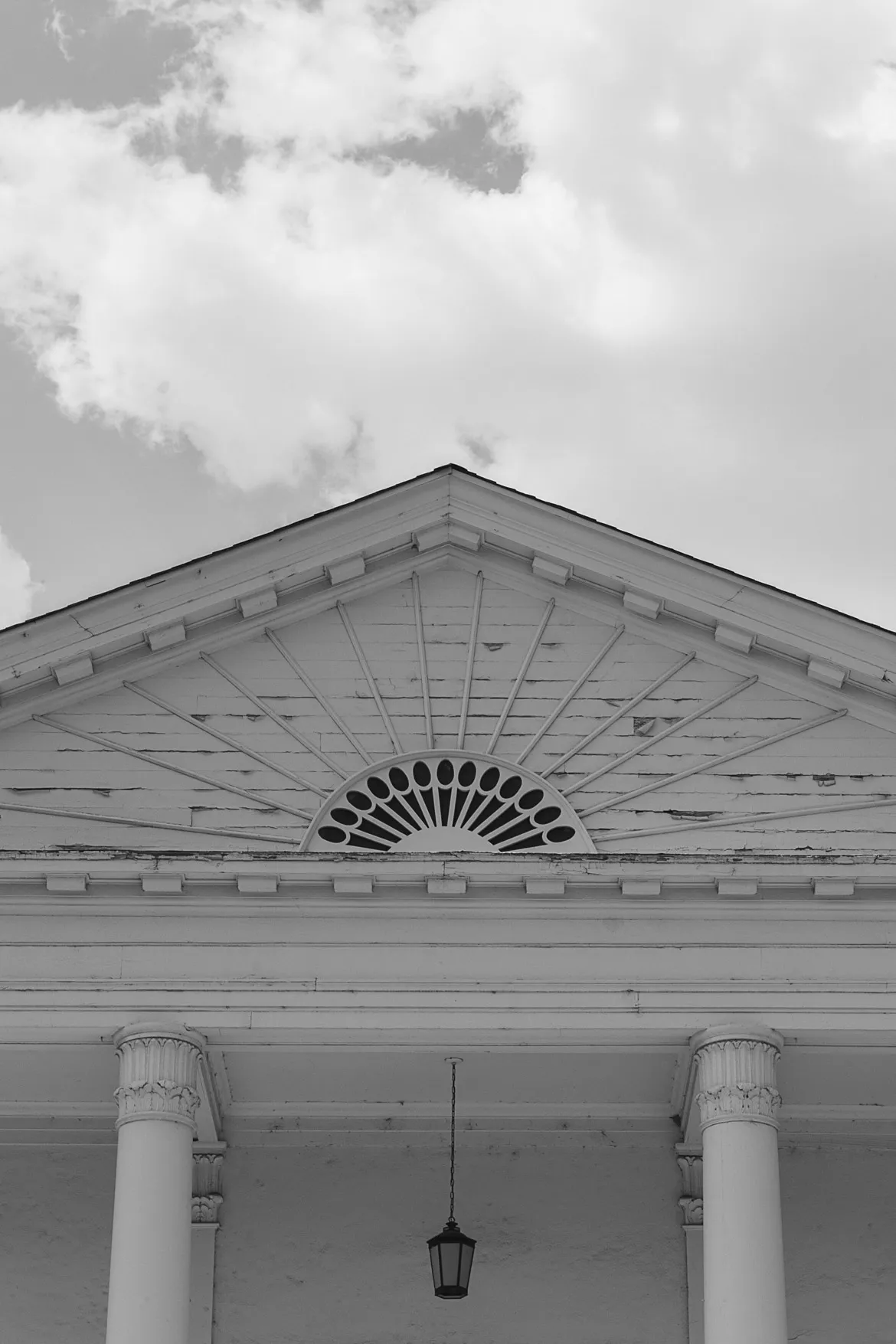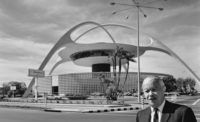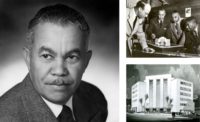New Photography Exhibition Reframes the Work of Paul Revere Williams
The Nevada Museum of Art’s exhibition will run through October

Janna Ireland, Paul Revere Williams’s La Concha Motel, Las Vegas, Nevada, 1961 (2022), chromogenic print. Photograph courtesy Janna Ireland with permission from The Neon Museum, Las Vegas

Janna Ireland, Paul Revere Williams’s El Reno Apartments, Reno, Nevada, 1937 (2021), chromogenic print. Photograph courtesy Janna Ireland

Janna Ireland, Paul Revere Williams’s Berkley Square, Las Vegas, Nevada, 1954 (2018), chromogenic print. Photograph courtesy Janna Ireland

Janna Ireland, Paul Revere Williams’s Guardian Angel Cathedral, Las Vegas, Nevada, 1963 (2021), chromogenic print. Photograph courtesy Janna Ireland




From depictions of a Las Vegas cathedral’s intricate stained glass to images of the undulating, shell-shaped roof of a roadside motel, Janna Ireland’s poetic black-and-white photographs, now on view at the Nevada Art Museum, pay homage to the storied architect Paul Revere Williams. The first licensed Black architect on the west coast, the Los Angeles-born Williams (1894-1980) was for decades excluded from the American architectural canon—despite having designed over 3,000 buildings, including numerous acclaimed landmarks, over the course of a decades-long career. Often deemed “the architect to the stars” for the grand houses he created for Hollywood celebrities, Williams became the AIA’s first Black member in 1923 and posthumously received the organization’s Gold Medal in 2017.

Paul Revere Williams portrait. Photo courtesy Janna Ireland
The new exhibition in Reno, titled “Janna Ireland on the Architectural Legacy of Paul Revere Williams in Nevada” (through October 2), highlights Williams’s substantial body of work in Nevada while also featuring projects from L.A. to Washington, D.C. Ireland’s architectural portraits illustrate an innovative designer of extraordinary breadth, both in style and typology. Williams sculpted weighty civic structures, playful commercial facades, and luxurious mansions for the likes of Frank Sinatra, Lucille Ball, and Bill “Bojangles” Robinson that came to symbolize Hollywood glamour.
Orphaned at four after his parents died of tuberculosis, Williams was raised by an encouraging family friend. Despite facing widespread racism, he took courses at the Los Angeles Beaux-Arts School and studied architecture and engineering at the University of Southern California. After a 1920 appointment to the city of L.A.’s newly created planning commission, Williams worked for several local firms before starting his own practice in 1923. He served as a navy architect during World War II and, in 1957, he also became the AIA’s first Black fellow.

1

2
Janna Ireland, Paul Revere Williams’s (1) Guardian Angel Cathedral, Las Vegas, Nevada, 1963 (2021) (2) Janna Ireland, Paul Revere Williams’s The First Church of Christ, Scientist, Reno, Nevada, 1939 (2021), chromogenic prints. Photos courtesy Janna Ireland
Among his notable works are the Palm Springs Tennis Center, designed with A. Quincy Jones in 1946, the 1949 renovation of the Beverly Hills Hotel (for which Williams chose, and reportedly even drew, the signature loopy lettering and green and pink tones), and the star-shaped scheme for St. Jude’s Children’s Hospital in Memphis (1962)—designed pro bono for his friend, comedian and hospital founder Danny Thomas. And on the east coast, he helped modernize Howard University’s Washington, D.C. campus and designed the city’s first federally funded housing project.

3

4
Janna Ireland, Paul Revere Williams’s (3) Luella Garvey Residence, Reno, Nevada, 1934 (2021). (4) Janna Ireland, Paul Revere Williams's La Concha Motel, Las Vegas, Nevada, 1961 (2022), chromogenic prints. Photo (3) courtesy Janna Ireland, photo (4) courtesy Janna Ireland, with permission from The Neon Museum, Las Vegas
Williams's path was not without obstacles. Due to racist housing covenants and other segregatory practices, Williams himself was legally barred from living in many of the houses he designed. He reportedly even learned to draw upside down, sketching plans on the spot in order to win over prejudiced potential clients who would sit across a table from him. In 1937, Williams published an essay in American Magazine entitled “I am a Negro,” in which he wrote of the racism he faced at each stage of his career. “I came to realize that I was being condemned, not by lack of ability, but by my color,” he said, adding, “as I grew older and thought more clearly, I found in my condition an incentive to personal accomplishment, and inspiring challenge…I wanted to prove that I, as an individual, deserved a place in the world.”

Portrait of the artist and photographer Janna Ireland. Photo courtesy Janna Ireland
Despite Williams’s prolific portfolio, in recent decades many of his buildings have been demolished, and others remain at risk. Still, many of his ideas remain preserved in historic archives and the artistry of others. Extensive research, much of it conducted by Williams’s granddaughter, archivist Karen E. Hudson, in the early 1990s, has helped elevate Williams’s profile and establish his importance as a leading 20th-century American architect. Many of his projects animate the pages of Ireland’s 2020 book Regarding Paul R. Williams: A Photographer’s View, which, alongside her exhibition, further illustrate the contemporary relevance of the architect’s extensive works.
Following its run at the Nevada Museum of Art in Reno, Ireland’s show will travel to the Nevada State Museum in Las Vegas, from December 2022 through May 2023.








